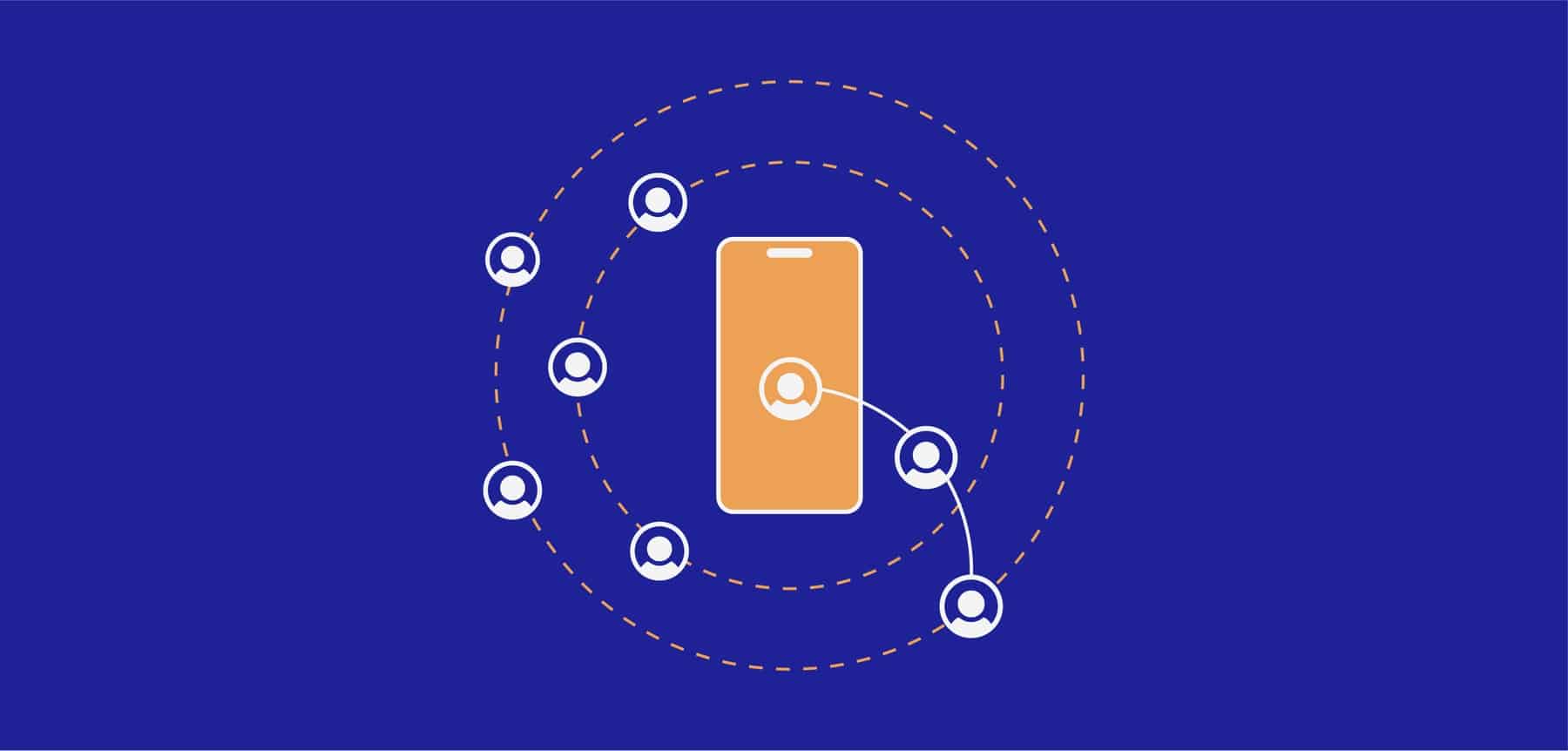What is a customer journey, and how can you create an effective journey map?
- Reading Time: 6 minutes
What is a Customer Journey?
The customer journey is the customers’ complete experience when interacting with a business. The customer journey consists of a series of touchpoints or interactions customers have with a business, both online and offline. This includes things like browsing a website, navigating an app, reading reviews, making a purchase, and receiving support. Customer journey mapping aims to understand these touchpoints and interactions in detail, to identify opportunities to improve the customer experience and to drive digital growth.

Why Understanding the Customer Journey is Critical?
As a result of understanding the customer journey, data-driven decision-making, personalization, identifying pain points, evaluating marketing effectiveness, improving customer retention, improving cross-channel experiences, and optimizing customer lifetime value are all possible. Increased revenue and growth are a result of businesses creating better experiences, addressing issues, and optimizing strategies.
Stages of the Customer Journey
Customer journey stages include awareness, consideration, purchase, retention and advocacy. By understanding the various stages and touchpoints of the customer journey, businesses can develop effective strategies for engaging customers, building brand awareness and loyalty, and ultimately driving sales and revenue growth.
Awareness Stage
During the awareness stage, customers become aware of a business and its products or services. This can occur through various channels, such as social media, advertising, or word-of-mouth.
The Consideration Stage
At the consideration stage, customers research and evaluate the business’s products or services. They may compare the business to its competitors and seek reviews or recommendations.
Purchase Stage
During this stage, customers make their final decision and proceed with the transaction. Before making a purchase, consumers may consider factors such as payment options, delivery methods, and ease of purchase.
Retention
Customer satisfaction may lead to repeat purchases and long-term loyalty if they are satisfied with the brand. Customer retention efforts include offering incentives, providing personalized communication, and providing excellent service.
Advocacy
Customers may recommend brands through word-of-mouth, online reviews, or social media. As a result, these customers become brand advocates, spreading awareness and driving new sales.

The Importance of Customer Journey Maps in Business
A customer journey map is critical for businesses because it helps them understand the customer experience and identify opportunities for improvement. By mapping out the journey, businesses can create a roadmap for delivering a seamless customer experience that meets their customers’ needs.
A customer journey map is an essential tool for businesses looking to improve customer experience. Here are a few reasons why customer journey maps are important for businesses:
- Provides a comprehensive view of the customer experience
- Helps align business processes with customer needs
- Enables better customer segmentation and targeting
- Drive innovation and continuous improvement
- Increases customer loyalty and advocacy.
Sign up to drive your business with the power of data
How do Mobile Apps Affect and Enhance the Customer Journey?
By leveraging analytics platforms, mobile apps can enhance the customer journey by providing a seamless, personalized experience tailored to the customer’s needs. Through these platforms businesses can analyse the customers’ behaviors on their app or web. Apps can keep customers engaged and informed by providing features like push notifications and in-app messaging using analytics. They enable customers to access information, browse products, and make purchases from anywhere, at any time. Mobile apps can also create new touchpoints for businesses to engage with customers, allowing businesses to build stronger relationships with their customers.
How to Create a Customer Journey Map
Creating a customer journey map involves visualizing the different touchpoints or interactions customers have with a business across various stages of the customer journey. It helps businesses understand customer experience and identify areas for improvement. The process involves defining customer personas, mapping out the stages of the customer journey, identifying touchpoints, gathering data, analyzing, and visualizing the data, and continuously refining the map to improve the customer experience. By creating a customer journey map, businesses can improve customer satisfaction, retention, and loyalty.
Steps for Creating a Customer Journey Map
To create a customer journey map, businesses should follow a series of steps. Creating a customer journey map involves the following steps:
- Define your customer personas
- Map out the customer journey stages
- Identify the touchpoints
- Gather data
- Analyze and visualize the data
- Iterate and refine.
Common Challenges in Customer Journey Mapping
Customer journey mapping is a valuable tool for improving customer experience, but it has challenges. Businesses may face a lack of data, complex customer behavior, misalignment with business goals, and stakeholder buy-in. Addressing these challenges through data gathering, segmentation, alignment, and stakeholder involvement can lead to effective customer journey maps that drive meaningful change. This will improve the overall customer experience.
Lack of Data
Lack of data can challenge customer journey mapping. This is because businesses may not have access to the necessary information to create an accurate map. To overcome this challenge, businesses can gather data from a variety of sources, such as customer surveys, social media, and digital analytics.
Complexity of Customer Behavior
The complexity of customer behavior can be a challenge in customer journey mapping because customers may interact with a business in a variety of ways. To address this challenge, businesses can create multiple customer journey maps that represent different customer segments or scenarios.
Inability to align Customer Journey with Business Goals
If a customer journey map does not align with business goals, it may not drive meaningful change. To address this challenge, businesses should ensure that their customer journey maps align with their overall business strategy and goals.
What Makes a Customer Journey Map Successful?
A successful customer journey map accurately represents the customer experience and identifies opportunities for improvement. The map should be based on data and research, and regularly updated to reflect changes in customer experience. An analytics platform must include the following elements in order to be successful:
- Clear segmentation: Customers should be segmented according to their demographics, behaviors, and preferences. As a result, businesses are able to tailor experiences to individual customer needs.
- Real-time analysis: Analytics platforms should provide real-time insight into the customer journey, allowing businesses to quickly adapt their strategies based on emerging trends.
- Actionable insights: Platforms should not only provide raw data but also provide actionable insights that help businesses optimize their strategies. Customer experience, personalization, and marketing recommendations may be included.
- Easy-to-use visualization tools: Analytics platforms should offer user-friendly visualization tools for creating and interpreting customer journey maps. As a result, businesses can communicate insights to stakeholders effectively.
- Scalability: As a business grows and evolves, so too should the analytics platform. Customer journey maps should be scalable to accommodate changes in market trends, customer behaviors, and business goals.
- Collaboration features: An analytics platform should enable collaboration among different teams within an organization for analyzing and optimizing customer journeys.
Key Takeaways
In summary, creating a customer journey map is critical to delivering a seamless customer experience. Businesses should understand the stages of the customer journey, gather structured data to inform the map, and align the map with their overall business goals. Successful customer journey maps accurately represent the customer experience, identify pain points, and provide a roadmap for improvement.
In addition to accurately representing the customer experience and identifying pain points, a well-designed customer journey map can also help businesses anticipate and meet customer needs at each stage of the journey. With the help of the Dataroid, businesses can tailor their products, services, and communication strategies to better serve customers at every touchpoint. Moreover, a customer journey map can also serve as a valuable tool for cross-functional teams within a business to align their efforts and work together towards a shared goal of delivering exceptional customer experiences. Ultimately, investing in creating a customer journey map can lead to increased customer satisfaction, loyalty, and ultimately, revenue growth for businesses.
Sign up to drive your business with the power of data

YOU MAY ALSO LIKE
Drive your digital growth
Schedule a demo today to learn more on how we can help you unleash the potential of digital using Dataroid.





